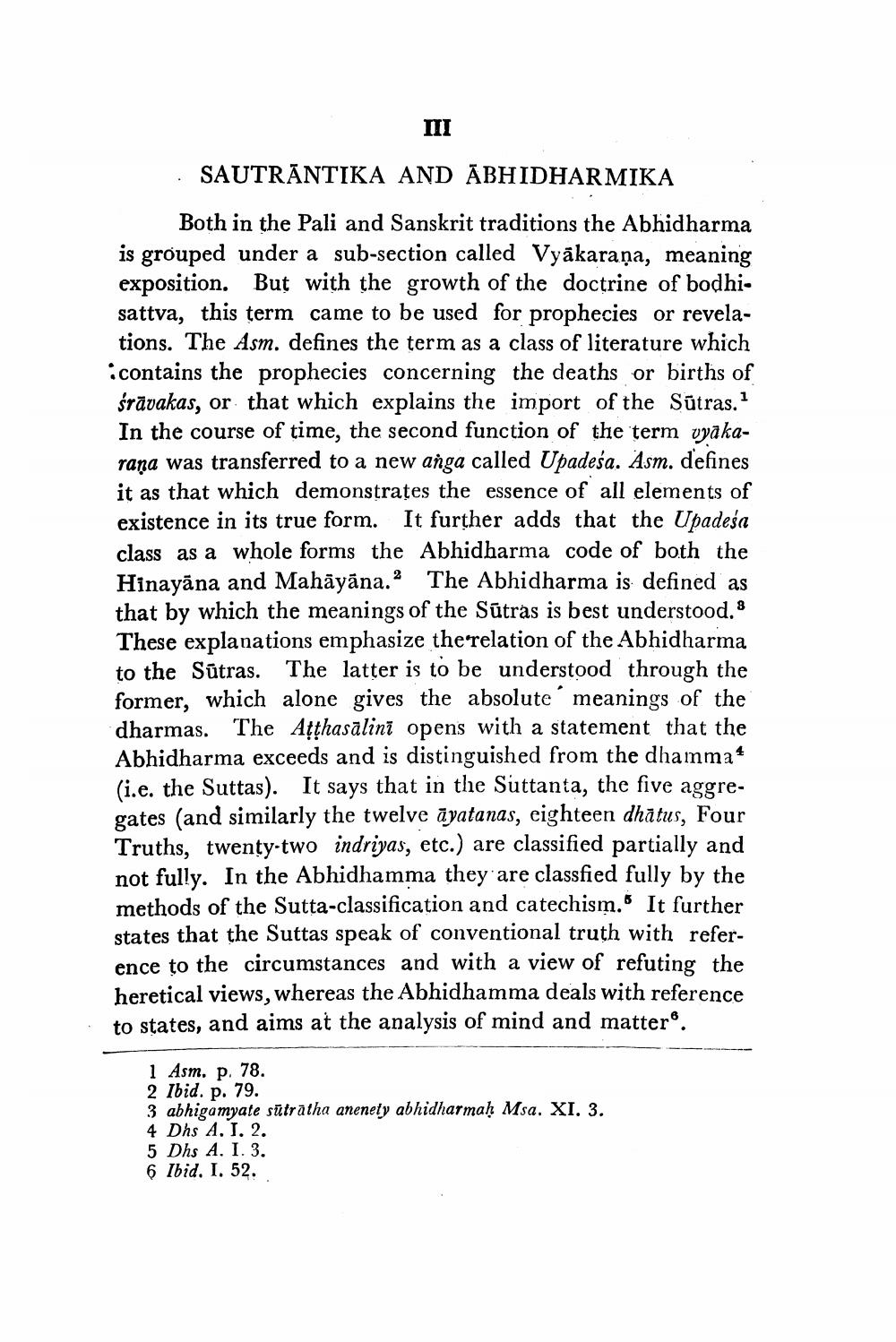________________ * SAUTRANTIKA AND ABHIDHARMIKA Both in the Pali and Sanskrit traditions the Abhidharma is grouped under a sub-section called Vyakarana, meaning exposition. But with the growth of the doctrine of bodhisattva, this term came to be used for prophecies or revelations. The Asm. defines the term as a class of literature which icontains the prophecies concerning the deaths or births of sravakas, or that which explains the import of the Sutras. In the course of time, the second function of the term vyakarana was transferred to a new anga called Upadesa. Asm. defines it as that which demonstrates the essence of all elements of existence in its true form. It further adds that the Upadesa class as a whole forms the Abhidharma code of both the Hinayana and Mahayana. The Abhidharma is defined as that by which the meanings of the Sutras is best understood.8 These explanations emphasize the relation of the Abhidharma to the Sutras. The latter is to be understood through the former, which alone gives the absolute meanings of the dharmas. The Atthasalini opens with a statement that the Abhidharma exceeds and is distinguished from the dhamma? (i.e. the Suttas). It says that in the Suttanta, the five aggregates (and similarly the twelve ayatanas, eighteen dhatus, Four Truths, twenty-two indriyas, etc.) are classified partially and not fully. In the Abhidhamma they are classfied fully by the methods of the Sutta-classification and catechism. It further states that the Suttas speak of conventional truth with reference to the circumstances and with a view of refuting the heretical views, whereas the Abhidhamma deals with reference to states, and aims at the analysis of mind and matter. 1 Asm. p. 78. 2 Ibid. p. 79. 3 abhigamyate sutratha anenely abhidharmah Msa. XI. 3. 4 Dhs A. I. 2. 5 Dhs A. I. 3. 6 Ibid. I. 52.




